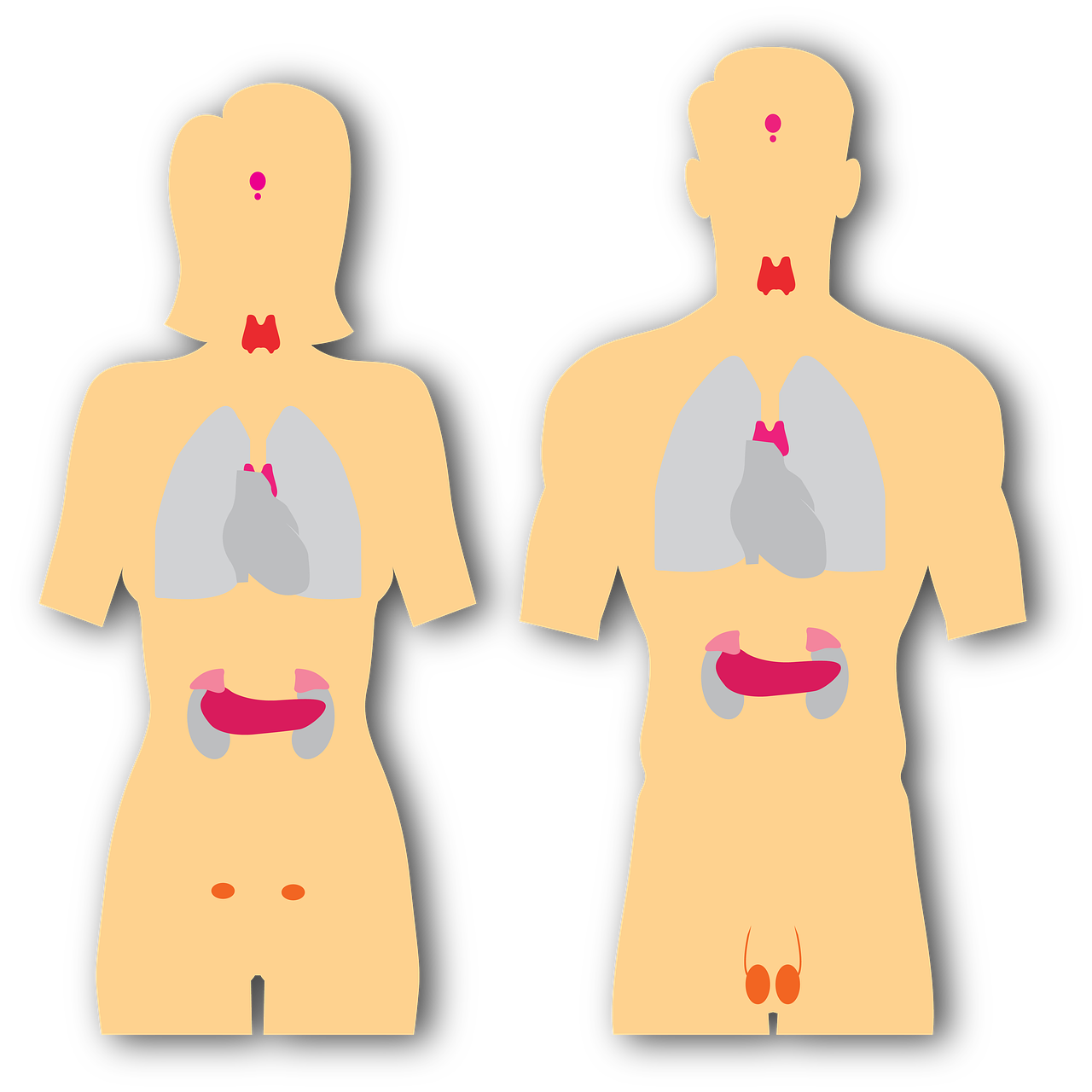In 5-10% of cases, one cause of high blood pressure can be your glands (endocrine cause). Specifically, the endocrine glands that could cause high blood pressure and an hypertensive state and that therefore need to be studied in the scope of the diagnostics of hypertension are the adrenal (suprarenal) and thyroid glands. The adrenal glands are situated on top of the kidneys. They are each made up of a cortex that surrounds a core of medulla. The malfunction of either of these parts can cause high blood pressure. The cortex produces hormones such as aldosterone and cortisol.
Primary aldosteronism, the excessive production of aldosterone (produced by the adrenal cortex), is the most common endocrine cause of hypertension. It can cause hypokalemia, muscle fatigue and polyuria. In 70% of cases it is caused by an adrenal adenoma: a nodule formed on the cortex that produces excess aldosterone, in the remaining 30% the cause is adrenal hyperplasia. The diagnosis is based on elevated levels of aldosterone in the blood. An MRI or CAT scan of the adrenal glands can confirm the cause of the condition. The therapy adopted can be surgical, if the cause is an adrenal adenoma, or through anti-aldosterone and anti-hypertensive drugs, if the cause is adrenal hyperplasia. Hypercortisolism is the excessive production of cortisol, also produced by the adrenal cortex. It is an endocrine cause of hypertension, and one aspect of what is known as Cushing’s syndrome, which aside from hypertension also involves obesity, moon fascies and stretch marks on the skin. It can be caused by a pituitary adenoma secreting ACTH, a hormone that stimulates the adrenal cortex causing excessive production of cortisol, in which case we speak of Cushing’s disease (a specific type of Cushing’s syndrome), or by an adenoma or carcinoma of the adrenal glands. The diagnosis is based on elevated levels of cortisol and ACTH if one suffers from Cushing’s disease, or otherwise elevated levels of cortisol accompanied by low levels of ACTH. An MRI or CAT scan of the sella turcica or adrenal glands can confirm the diagnosis. Surgical therapy is adopted, based on the removal of the pituitary adenoma in Cushing’s disease, or the removal of the adrenal tumor in Cushing’s syndrome. The core of medulla of the adrenal glands is made up of chromaffin cells, which release catecholamines. Excessive production of catecholamines (adrenaline and noradrenaline) can cause endocrine hypertension. This is the case with pheochromocytoma, a typically benign tumor of chromaffin cells, in which case the therapy adopted is purely surgical.
Scientific articles below:
- Stress-induced aldosterone hyper-secretion in a substantial subset of patients with essential hypertension (J Clin Endocrinol Metab. 2015 May 14:jc20151268) http://press.endocrine.org/doi/pdf/10.1210/jc.2015-1268
- Aldosterone and the cardiovascular system: a dangerous association (Horm Mol Biol Clin Investig. 2010 Dec 1;4(2):539-48) http://www.degruyter.com/view/j/hmbci.2010.4.issue-2/hmbci.2010.057/hmbci.2010.057.xml;jsessionid=B507508F7805AAA0168BB7AB6A503
- Hormones of the cardiovascular system (NCBI Bookshelf) http://www.ncbi.nlm.nih.gov/books/NBK279096/


